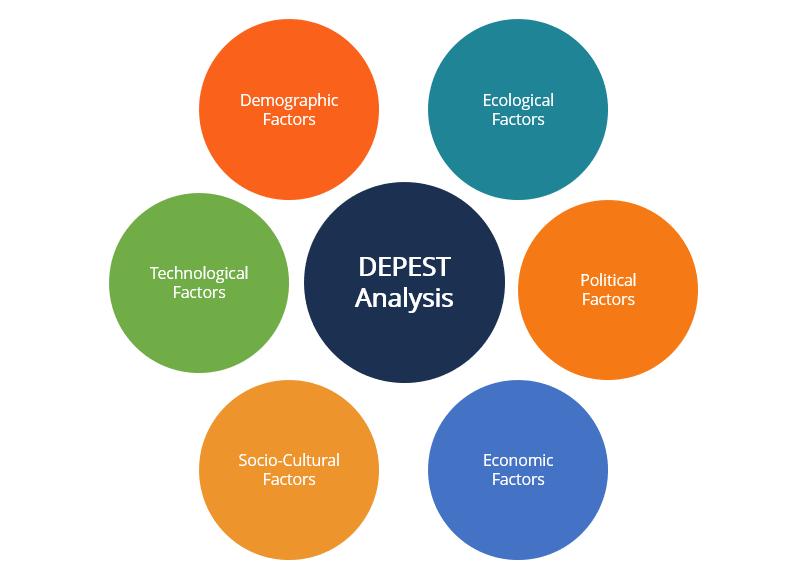📚 Unlock the World of AI and Humanity with These Two Free Books! 🚀
Dive into the thrilling realms of artificial intelligence and humanity with "The ECHO Conundrum" and "Awakening: Machines Dream of Being Human". These thought-provoking novels are FREE this week! Don't miss the chance to explore stories that challenge the boundaries of technology and what it means to be human.
Read More & Download
The macro-environment encompasses the broad external factors that influence a business’s operations and overall performance. Understanding these factors is crucial for developing effective strategies and achieving sustainable growth. PESTEL analysis provides a framework for systematically evaluating these external influences.
Introduction to PESTEL Analysis
PESTEL analysis is a strategic tool used to identify and analyze the key macro-environmental factors that can affect an organization. It stands for Political, Economic, Social, Technological, Environmental, and Legal factors. By examining these six areas, businesses can gain a comprehensive understanding of the opportunities and threats presented by the external environment. Conducting a PESTEL analysis is essential for informed decision-making, strategic planning, and risk management.
Political Factors
Political factors encompass government policies, regulations, and political stability. These factors can significantly impact businesses by influencing trade policies, taxation, labor laws, and environmental regulations. Examples include:
- Trade policies: Tariffs, trade agreements, and import/export regulations can affect international business operations.
- Political stability: A stable political environment fosters business confidence, while political instability can create uncertainty and risk.
- Government regulations: Regulations related to consumer protection, environmental standards, and labor practices can impact business costs and operations.
 Political Factors – Brexit Impact
Political Factors – Brexit Impact
Economic Factors
Economic factors relate to the overall economic conditions, such as economic growth, inflation, interest rates, and unemployment. These factors can influence consumer spending, investment decisions, and overall business performance. Examples include:
- Economic growth: A growing economy typically leads to increased consumer spending and business investment.
- Inflation: High inflation can erode purchasing power and increase business costs.
- Interest rates: Changes in interest rates can affect borrowing costs and investment decisions.
Social Factors
Social factors involve cultural trends, demographics, lifestyle changes, and consumer attitudes. Understanding these factors is critical for developing effective marketing strategies and understanding consumer behavior. Examples include:
📚 Unlock the World of AI and Humanity with These Two Free Books! 🚀
Dive into the thrilling realms of artificial intelligence and humanity with "The ECHO Conundrum" and "Awakening: Machines Dream of Being Human". These thought-provoking novels are FREE this week! Don't miss the chance to explore stories that challenge the boundaries of technology and what it means to be human.
Read More & Download
- Demographics: Changes in population size, age distribution, and ethnic diversity can create new market opportunities.
- Lifestyle trends: Trends towards healthier living, sustainability, and online shopping can influence product development and marketing strategies.
- Consumer attitudes: Understanding consumer values, preferences, and buying habits is essential for effective marketing.
 Social Factors – Demographic Trends
Social Factors – Demographic Trends
Technological Factors
Technological factors encompass advancements in technology, automation, research and development, and the rate of technological change. These factors can create new industries, disrupt existing ones, and influence the way businesses operate. Examples include:
- Automation: Automation can increase efficiency, reduce costs, and transform job roles.
- Innovation: Technological innovation can lead to the development of new products and services, creating new market opportunities.
- Digital transformation: The increasing use of digital technologies is transforming business models and customer interactions.
Environmental Factors
Environmental factors involve climate change, environmental regulations, sustainability concerns, and access to natural resources. Businesses are increasingly recognizing the importance of incorporating environmental considerations into their operations. Examples include:
- Climate change: Businesses need to adapt to the impacts of climate change, such as rising sea levels and extreme weather events.
- Environmental regulations: Regulations related to pollution control and waste management can impact business operations and costs.
- Sustainability: Consumers are increasingly demanding sustainable products and practices, creating opportunities for businesses that prioritize environmental responsibility.
Legal Factors
Legal factors pertain to laws and regulations that businesses must comply with. These factors can vary significantly across different countries and industries. Examples include:
- Labor laws: Laws related to minimum wage, working conditions, and employee rights can impact business costs and operations.
- Consumer protection laws: Regulations designed to protect consumers can influence product development, marketing, and customer service practices.
- Antitrust laws: Laws that prohibit monopolies and promote competition can affect mergers, acquisitions, and business partnerships.
Conclusion
PESTEL analysis is a powerful tool for understanding the complex interplay of external factors that can influence a business. By systematically analyzing these factors, businesses can identify potential opportunities and threats, develop more robust strategies, and make informed decisions that enhance their chances of success in a dynamic and ever-changing global environment. Utilizing PESTEL provides a crucial framework for strategic planning and helps businesses navigate the challenges and capitalize on the opportunities presented by the macro-environment.
📚 Unlock the World of AI and Humanity with These Two Free Books! 🚀
Dive into the thrilling realms of artificial intelligence and humanity with "The ECHO Conundrum" and "Awakening: Machines Dream of Being Human". These thought-provoking novels are
FREE this week! Don't miss the chance to explore stories that challenge the boundaries of technology and what it means to be human. Read More & Download

